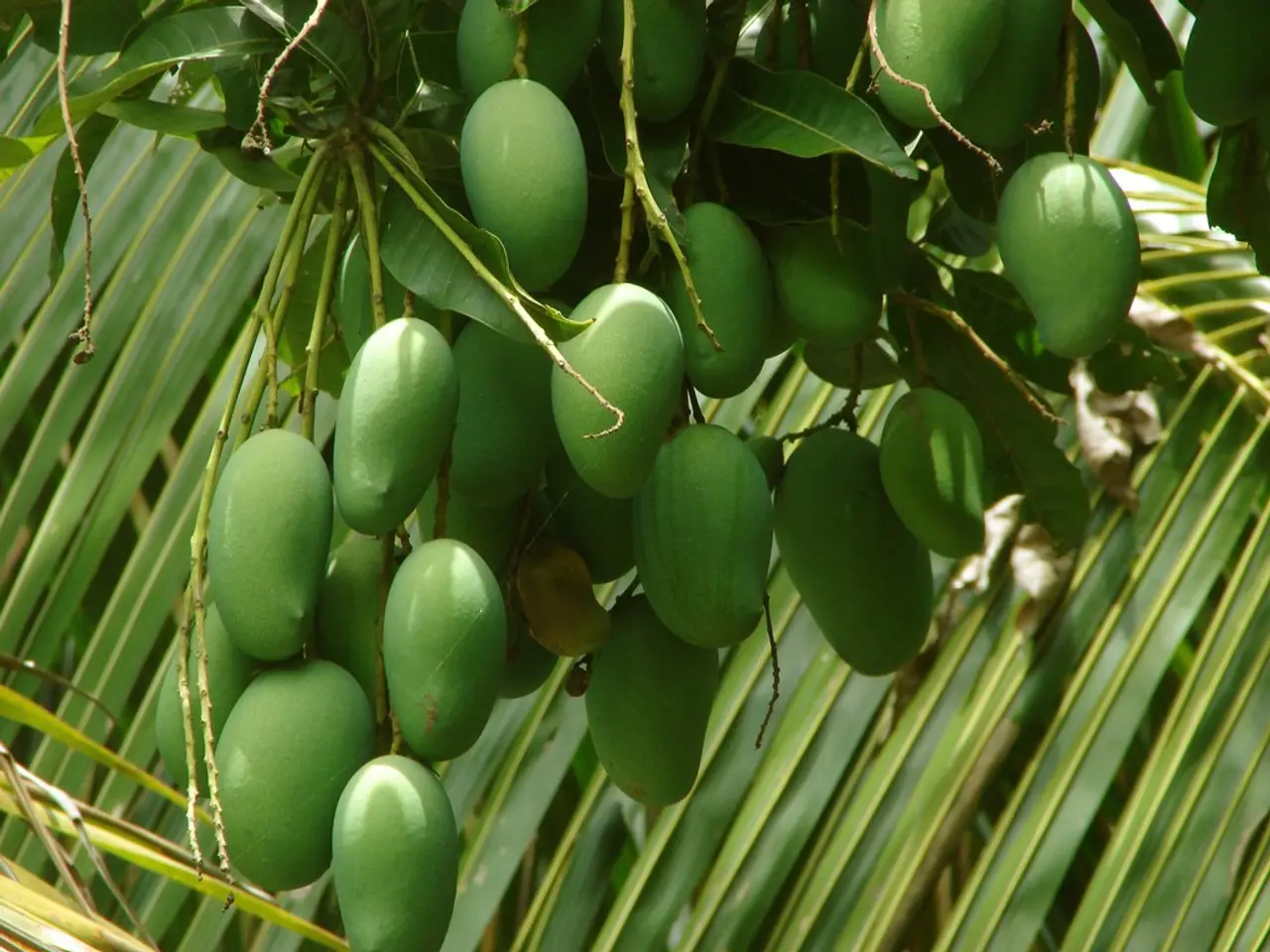Guidelines for Sustaining Mango Orchards for Maximum Harvest
In the world of tropical fruit farming, mangoes stand out as a popular choice due to their delectable taste and nutritional benefits. To ensure a bountiful and high-quality mango harvest, it's essential to follow best practices in soil management, irrigation, pest control, pruning, and post-harvest handling.
Soil Management
Maintaining soil fertility is key to a thriving mango farm. Organic mulches, such as straw or compost, can significantly improve moisture retention, regulate temperature, and suppress weeds. This not only prevents soil compaction, crucial for strong root systems, but also encourages biodiversity and soil health. Agroforestry practices, like integrating multiple layers of vegetation, can further protect soil from erosion and improve microclimate conditions for mango trees, leading to better water retention and nutrient cycling.
Irrigation Management
Drip irrigation, an efficient watering method, is highly recommended for mango farming. It conserves water, ensures targeted nutrient delivery, and lowers disease risk. To encourage deep rooting and robust plant health, it's best to irrigate deeply but infrequently. Regularly monitoring soil moisture using moisture meters or finger tests at 2-3 inches depth is crucial to determine watering needs accurately. Adapt irrigation frequency according to the crop growth stage and weather — increase watering during dry, hot conditions and reduce it during rainy periods.
Pest and Disease Control
Integrated pest management (IPM) is a sustainable approach that combines chemical and non-chemical strategies for effective pest and weed control. By participating in educational webinars and training by industry experts, farmers can stay updated on the latest, eco-friendly pest management practices.
Pruning
Regular pruning is essential for shaping the tree, improving air circulation, and controlling flowering and fruiting cycles. Pruning removes dead or diseased branches, reduces pest habitats, and facilitates chemical spraying if needed.
Post-Harvest Handling
Proper handling after harvest is crucial to maintain fruit quality and prolong shelf life. Handle mangoes gently to avoid bruising, store at optimal temperatures, and use appropriate packaging. Post-harvest practices should align with market requirements and regulations for exportability.
By adopting these practices, farmers can achieve higher mango yields of superior quality while promoting sustainability and resilience on their farms. Consistent, high-quality yields can be ensured year after year with a well-regulated temperature and environment, and by harvesting mangoes when they are most accessible for better taste and quality.
When cultivating mangoes on a farmland, adopting a suitable lifestyle that includes home-and-garden practices such as gardening is vital for maintaining soil fertility and promoting biodiversity. Application of organic mulches, suitable irrigation methods like drip irrigation, and regular pruning contribute to a healthier mango farm and better quality produce.




